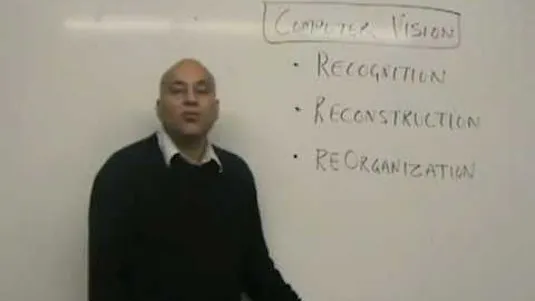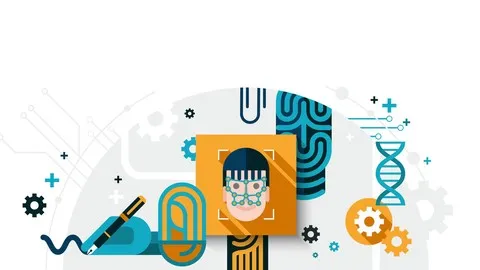
Computer Vision: The Fundamentals 
This course provides an introduction to the fundamentals of computer vision. Students will learn the concepts and algorithms behind successful applications such as face detection, handwritten digit recognition, 3D model reconstruction, and more. ▼
ADVERTISEMENT
Course Feature
![]() Cost:
Cost:
Free
![]() Provider:
Provider:
Coursera
![]() Certificate:
Certificate:
No Information
![]() Language:
Language:
English
![]() Start Date:
Start Date:
23rd Apr, 2012
Course Overview
❗The content presented here is sourced directly from Coursera platform. For comprehensive course details, including enrollment information, simply click on the 'Go to class' link on our website.
Updated in [March 20th, 2023]
This course, Computer Vision: The Fundamentals, provides an introduction to the field of computer vision. Students will learn the concepts and algorithms behind some of the remarkable successes of computer vision, such as face detection, handwritten digit recognition, and reconstructing three-dimensional models of cities. Through lectures, readings, and hands-on programming assignments, students will gain an understanding of the fundamentals of computer vision and its applications. Topics covered include image processing, feature extraction, object recognition, and 3D reconstruction. By the end of the course, students will have a solid foundation in computer vision and be able to apply their knowledge to solve real-world problems.
[Applications]
After completing this course, students should be able to apply the concepts and algorithms learned to develop computer vision applications. They should be able to identify and solve problems related to computer vision, such as object recognition, image segmentation, and 3D reconstruction. Additionally, they should be able to develop and implement algorithms for computer vision tasks, such as feature extraction, object tracking, and image classification. Finally, they should be able to evaluate the performance of computer vision algorithms and develop strategies for improving them.
[Career Paths]
1. Computer Vision Engineer: Computer vision engineers are responsible for developing and implementing computer vision algorithms and systems. They work with a variety of technologies, such as machine learning, deep learning, and computer vision, to create systems that can detect, recognize, and analyze objects in images and videos. The demand for computer vision engineers is growing rapidly, as the technology is being used in a variety of industries, such as healthcare, automotive, and robotics.
2. Computer Vision Scientist: Computer vision scientists are responsible for researching and developing new algorithms and techniques for computer vision. They work with a variety of technologies, such as machine learning, deep learning, and computer vision, to create systems that can detect, recognize, and analyze objects in images and videos. The demand for computer vision scientists is growing rapidly, as the technology is being used in a variety of industries, such as healthcare, automotive, and robotics.
3. Computer Vision Researcher: Computer vision researchers are responsible for researching and developing new algorithms and techniques for computer vision. They work with a variety of technologies, such as machine learning, deep learning, and computer vision, to create systems that can detect, recognize, and analyze objects in images and videos. The demand for computer vision researchers is growing rapidly, as the technology is being used in a variety of industries, such as healthcare, automotive, and robotics.
4. Computer Vision Developer: Computer vision developers are responsible for developing and implementing computer vision algorithms and systems. They work with a variety of technologies, such as machine learning, deep learning, and computer vision, to create systems that can detect, recognize, and analyze objects in images and videos. The demand for computer vision developers is growing rapidly, as the technology is being used in a variety of industries, such as healthcare, automotive, and robotics.
[Education Paths]
1. Bachelor of Science in Computer Science: This degree program provides students with a comprehensive understanding of computer science fundamentals, including algorithms, data structures, programming languages, operating systems, and computer architecture. Students will also learn about the latest developments in computer vision, such as deep learning and artificial intelligence.
2. Master of Science in Computer Vision: This degree program focuses on the development of advanced computer vision algorithms and techniques. Students will learn about the latest developments in computer vision, such as deep learning and artificial intelligence, as well as the fundamentals of computer vision, including image processing, object recognition, and 3D reconstruction.
3. Doctor of Philosophy in Computer Vision: This degree program focuses on the development of advanced computer vision algorithms and techniques. Students will learn about the latest developments in computer vision, such as deep learning and artificial intelligence, as well as the fundamentals of computer vision, including image processing, object recognition, and 3D reconstruction.
4. Master of Science in Artificial Intelligence: This degree program focuses on the development of advanced artificial intelligence algorithms and techniques. Students will learn about the latest developments in artificial intelligence, such as deep learning and natural language processing, as well as the fundamentals of artificial intelligence, including machine learning, computer vision, and robotics.
Course Provider

Provider Coursera's Stats at AZClass
Computer Vision: The Fundamentals introduces the fundamentals of computer vision. Students will learn the concepts and algorithms behind successful applications such as face detection, handwritten digit recognition, 3D model reconstruction, and more. Fundamentals is a course that teaches learners the fundamentals of computer vision. Learners will understand the concepts and algorithms behind some of computer vision's notable successes, such as face detection, handwritten digit recognition, and reconstructing 3D models of cities. Learners will learn how to use computer vision to solve real-world problems such as recognizing objects in images, detecting and tracking objects in videos, and creating 3D models from images. They will also learn about different types of computer vision algorithms such as convolutional neural networks and how they can be applied to solve various tasks.
Discussion and Reviews
0.0 (Based on 0 reviews)
Explore Similar Online Courses

Mahout Online Training

Algebra

Python for Informatics: Exploring Information

Social Network Analysis

Introduction to Systematic Review and Meta-Analysis

The Analytics Edge

DCO042 - Python For Informatics

Causal Diagrams: Draw Your Assumptions Before Your Conclusions

Whole genome sequencing of bacterial genomes - tools and applications

Introduction to Computer Vision

Learn Computer Vision with OpenCV Library using Python


Start your review of Computer Vision: The Fundamentals